Let's talk Siamese
With their sleek, sassy looks, and almost regal-like bearing, the Siamese is often regarded as one of the most archetypal and beautiful breeds of cat. And yet, in their temperament, the Siamese is almost dog-like. Affectionate, sociable, and playful, they form strong attachments to their owners and enjoy being with children and other pets. They also have their own favorite toys and never tire of games - even fetch!
Official name: Siamese
Other names: Royal Cat of Siam
Origins: Thailand
Hair length
2 out of 5Shedding Level
2 out of 5Grooming needs
1 out of 5Energy level*
3 out of 5Vocal
5 out of 5Family pet?*
4 out of 5Compatibility with other pets
4 out of 5Can be left alone
1 out of 5Environment (indoor/outdoor)
3 out of 5
| Male | Female |
|---|---|
| Height | Height |
| 29 - 31 cm | 27 - 31 cm |
| Weight | Weight |
| 4 - 7 lb | 3 - 5 lb |
| Life stages | |
|---|---|
| Kitten | Adult |
| 4 to 12 months | 1 to 7 years |
| Mature | Senior |
| 7 to 12 years | From 12 years |
Hair length
2 out of 5Shedding Level
2 out of 5Grooming needs
1 out of 5Energy level*
3 out of 5Vocal
5 out of 5Family pet?*
4 out of 5Compatibility with other pets
4 out of 5Can be left alone
1 out of 5Environment (indoor/outdoor)
3 out of 5
| Male | Female |
|---|---|
| Height | Height |
| 29 - 31 cm | 27 - 31 cm |
| Weight | Weight |
| 4 - 7 lb | 3 - 5 lb |
| Life stages | |
|---|---|
| Kitten | Adult |
| 4 to 12 months | 1 to 7 years |
| Mature | Senior |
| 7 to 12 years | From 12 years |
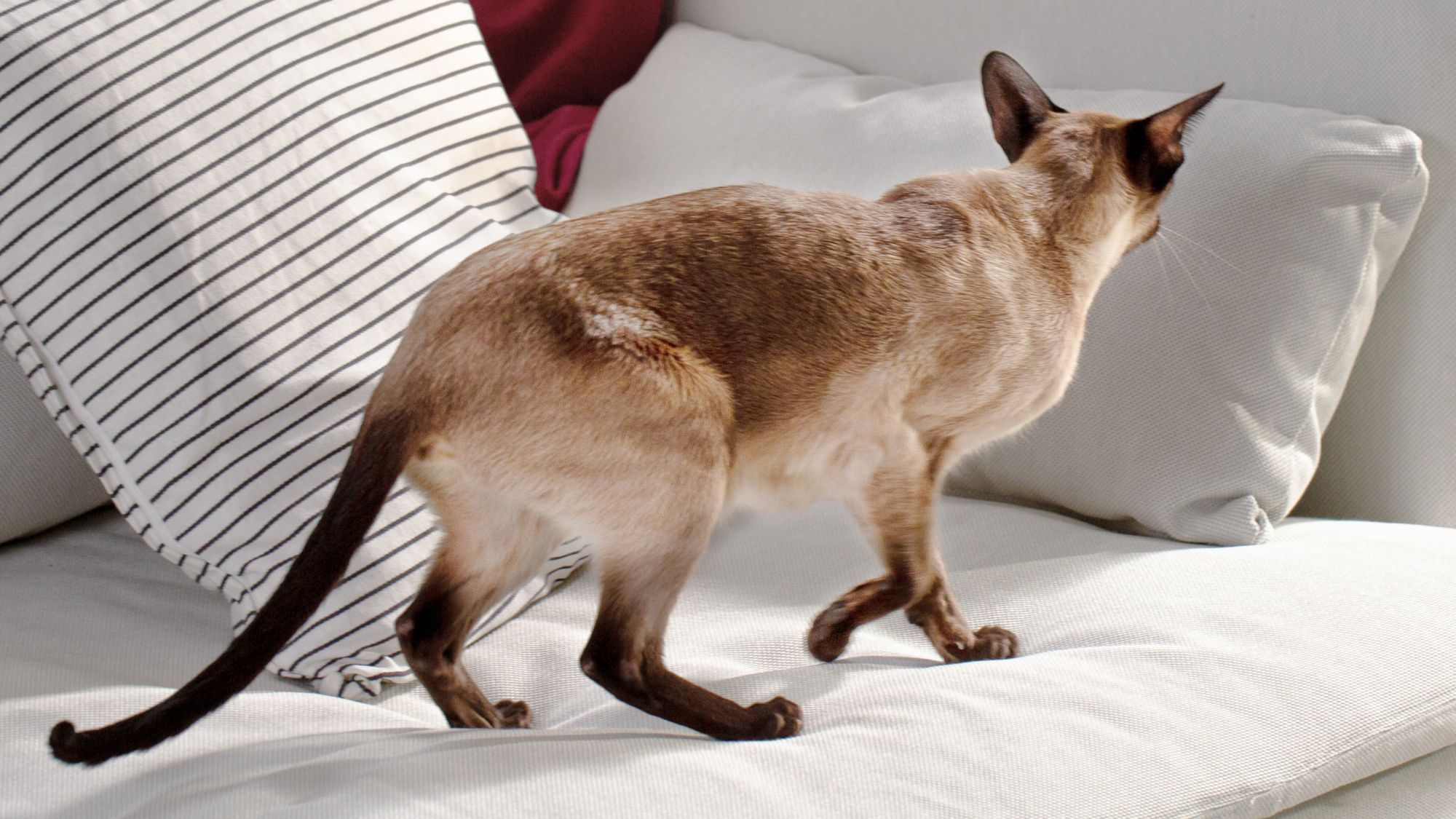
Get to know the Siamese
All you need to know about the breed
As the old expression goes, “nobody owns a cat”. But, if they did, it would probably be a Siamese.
Definitely one of the friendlier feline breeds, they revel in being with people and can often bond strongly with a single person. They also thrive on attention and interaction. In fact, in some ways, the Siamese cat temperament is more like that of a dog.
Once known as the Royal Cat of Siam, the Siamese breed has always been closely associated with Thailand, although their precise origins remain somewhat of a mystery. What we do know is that they were brought over to the West in the late 19th century to a mixed reception but then soon became popular pets.
It's easy to see why were named the ‘Royal’ Cat of Siam. With their long, graceful body, and extended neck, they wouldn’t look out of place on the Egyptian tomb of a pharaoh. They also have slender legs, an elegant head and striking almond-shaped eyes that are a deep blue color.
Easy to take care of, their coat is short and smooth, accentuating their lithe, muscular bodies. The Cat Fancier's Association (CFA), the largest registry in the US, only recognizes four traditional Siamese coat colors: seal point, blue point, chocolate point and lilac point.
Highly intelligent, the Siamese cat has personality in spades. They’ll be interested in everything that you’re doing and often follow their owners like a shadow. They are also surprisingly ‘chatty’ animals and will try to communicate with you in their own unique way - sounding quite unlike any other cat.
A regular fixture in popular culture, the Siamese has been depicted in paintings and books for centuries. On our screens, they have also featured in several Walt Disney films including Lady and the Tramp (1955), The Incredible Journey (1963), That Darn Cat (1965) and The Aristocats (1970). More recently, one of the most popular Pokémon species was based on a Siamese cat.
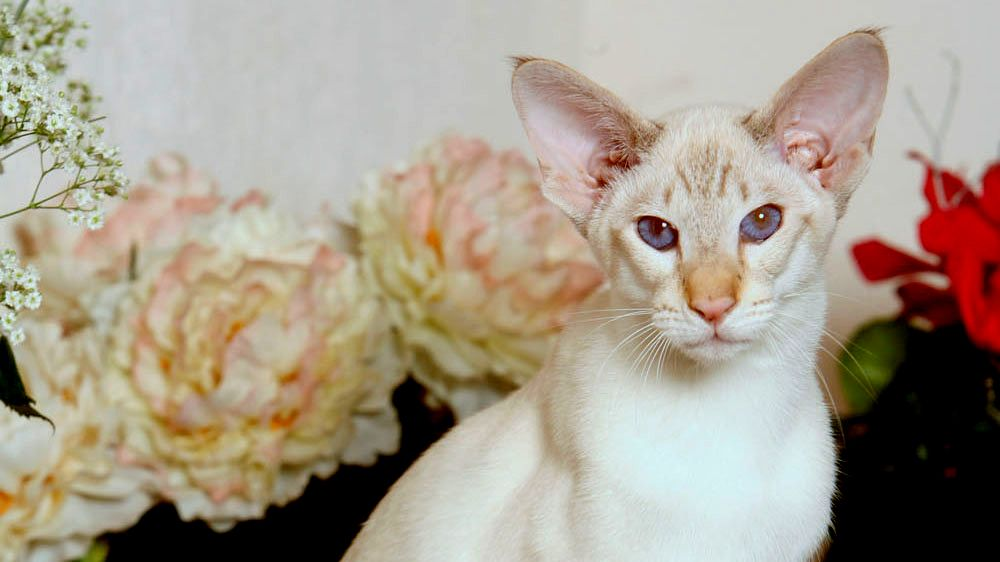
Two facts about Siamese cats
1. A perfect symmetry
With their elegant, angular bodies, the Siamese cat is often thought to look almost other-worldly. But did you know that if you measure from the tip of the nose to each tip of the ear, their face also forms a perfect triangle?
2. Two is company
Given their sociable nature, Siamese cats don’t do well if left alone. So, for human owners who may need to be out during the day, it’s generally recommended to consider having a second Siamese—that way, they can keep each other company.
History of the breed
Dating back many centuries, the first known reference to the Siamese breed occurs in a collection of ancient manuscripts from the historic Ayutthaya Kingdom in Siam - what is now modern-day Thailand. Entitled ‘The Treatise on Cats’, these fascinating documents are thought to have been created from the 14th century onwards.
It wasn’t until the 1800s, however, that the Siamese found its way to the West. Originally known as the Royal Cat of Siam, they received something of a mixed reaction here initially, as they were unlike any other cat anyone had ever seen. In fact, in 1871, when three were shown at London’s Crystal Palace Show, they were given a decidedly lukewarm reception.
However, it wasn’t long before the Siamese breed took off, going on to become a very fashionable pet. The first standard was established in the UK in 1892 and they were soon in demand on both sides of the pond.
Today, there are actually two types of Siamese cat. The reason for this is that, due to selective breeding, there developed two sub-breeds of Siamese: the modern ‘Show-style’, which is more elongated and slender in the body and has a different-shaped head, and the ‘Traditional’ Siamese.
From head to tail
Physical characteristics of Siamese cats
1.Head
2.Face
3.Body
4.Coat
5.Coloring
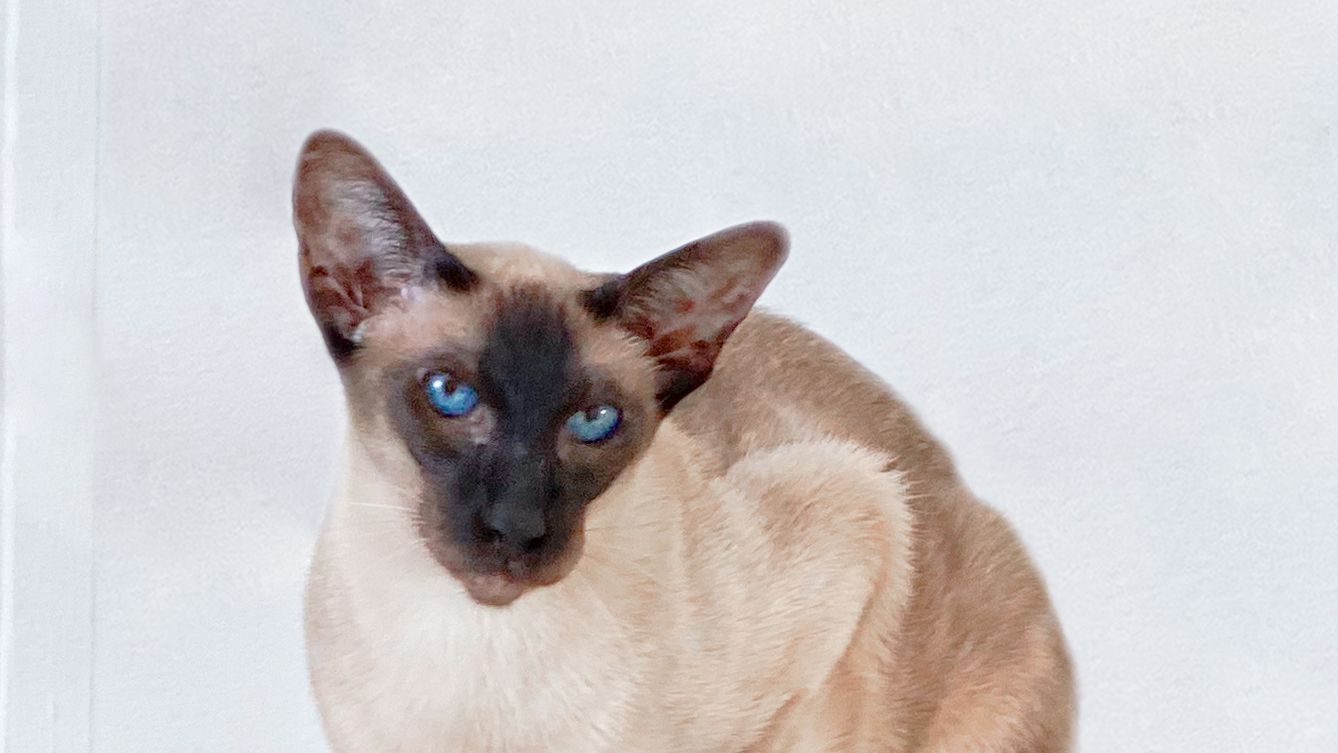
Things to look out for
From specific breed traits to a general health overview, here are some interesting facts about your Siamese
Siamese cats don't have the best night-time vision
While they may have some of the most striking eyes of any cat, with their piercing blue gaze, they lack a physiological feature that amplifies low light. Many early Siamese cats were actually cross-eyed, which helped to compensate for the problem, but the trait was seen as a fault. As a result, it was largely eliminated through selective breeding. It’s worth knowing all this as their poorer eyesight can make the Siamese more at risk to nighttime dangers such as traffic. On the plus side, unlike some other blue-eyed animals, their hearing is unaffected in any way.
Another common problem in the Siamese is dental issues
These can include conditions such as gingivitis – inflammation of the gums – which can potentially lead on to periodontal disease. Siamese cats can also be predisposed to a condition that the scientists call ‘FORL’ (feline odontoclastic resorptive lesion). While some cats don’t display any signs, others salivate or show difficulty in chewing. To confirm the diagnosis, intraoral radiographs are needed. In any event, regular dental check-ups are recommended for your Siamese. They should also have their teeth brushed daily – or as often as you can manage.
They can also be susceptible to some health conditions
If your Siamese seems off-color in any way and you notice any health issues, it is best to go to your veterinarian.
Tailored Nutrition for Siamese
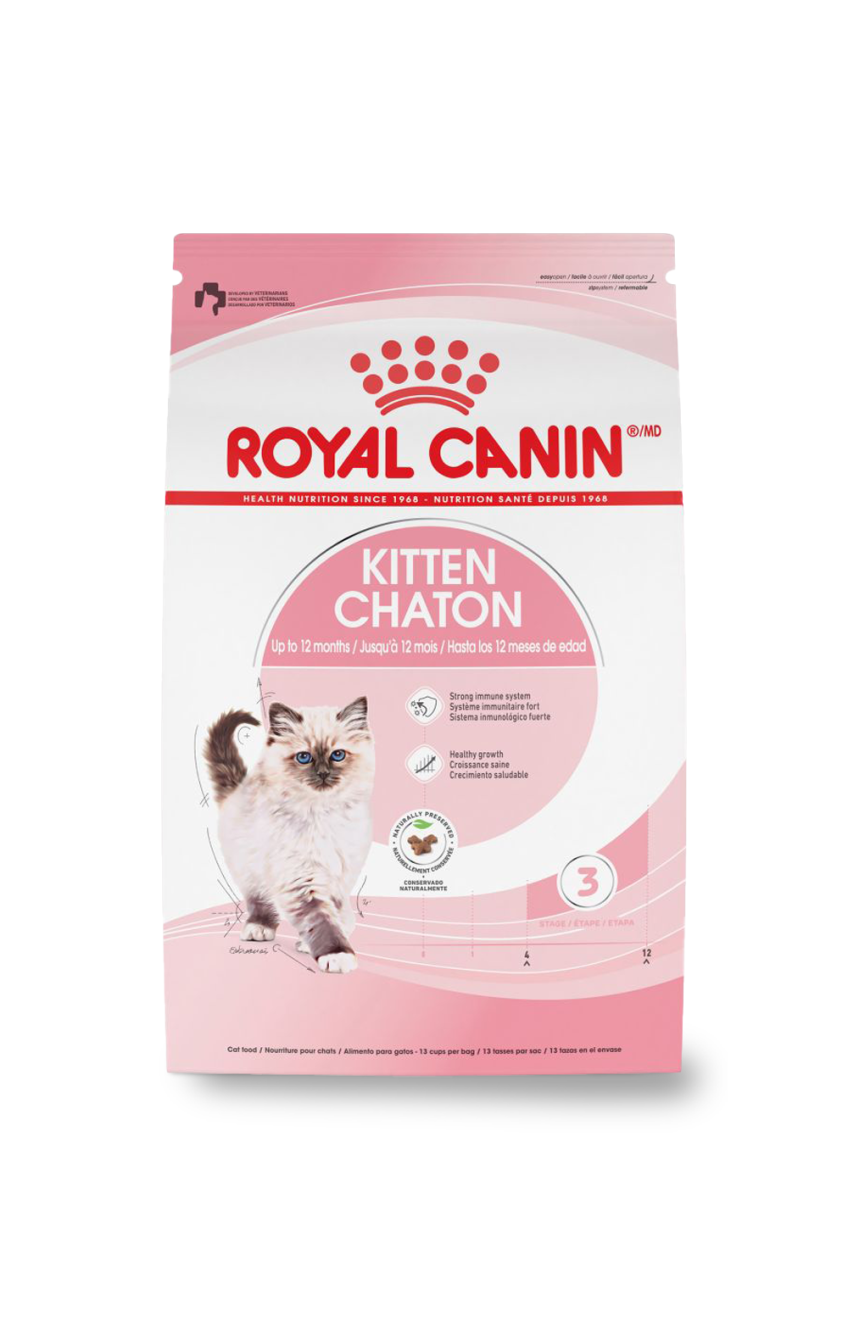
Tailored health nutrition has a fundamental role to play in maintaining the health and beauty of Siamese cats. Food provides energy to help with vital functions and a complete nutritional formula for Siamese should contain an adapted balance of nutrients. Feeding them in this way will offer a diet that's neither deficient nor excessive, both of which could have adverse effects on your cat's health.
Cats are naturally adapted to eating small servings - between 7 and 10 times a day.
The following recommendations are for healthy animals. If your cat has health problems, please consult your veterinarian who may recommend an exclusively veterinary diet.
Strong Immune System
Supports the development of the kitten's healthy immune system with the inclusion of clinically proven antioxidants, including vitamins E and C.
Healthy Growth
At 4 months old, a kitten's growth rate changes with rising energy levels to support growing bones and muscles. This formula contains an adapted level of protein, vitamins and minerals for the final stage of the Siamese's kittenhood until 1 year old.
Microbiome Support
Combination of prebiotics and highly digestible proteins to help promote a healthy balance of intestinal microbiota for digestive health.

The main nutritional goals for adult Siamese cats are:
Lean Muscular Body
The Siamese has an elegant and athletic silhouette. An increased level of protein and a moderate fat level help preserve a long, slender, and muscular body. Enriched with L-carnitine which is important for healthy fat metabolism.
Digestive Health Highly digestible protein (L.I.P.*.) and prebiotics promote a balanced intestinal flora for optimal digestive health. *Protein selected for its very high digestibility.
Healthy Glossy Coat
The Siamese has a notable very short and sleek coat which lies close to the body. Contains a combination of specific nutrients including amino acids, vitamins, omega-3 and omega-6 fatty acids to help maintain healthy skin and a shiny coat.
Special Siamese Jaw
This specifically designed tube-shape kibble is easy for the narrow and long Siamese cat muzzle to grasp. The unique kibble encourages chewing to help reduce the rate of food intake.

A senior Siamese cat - one over the age of 12 - their ability to digest and absorb slows down. To maintain the weight of the aging cat and minimize the risk of deficiency, they should be given an extremely digestible food filled with essential nutrients.
Weight Maintenance
In some senior cats, the level of activity reduces with age, which leads to weight gain. Aging/Spayed Neutered 12+ contains a moderate level of fat to help maintain an ideal body condition.
Healthy Aging Complex
An exclusive complex of antioxidants including lycopene and omega-3 fatty acids to support the body systems through the aging process.
Renal Health
Helps support healthy renal function with a moderate phosphorus level.
Enriched with L-Carnitine
L-Carnitine is involved in fat metabolism.
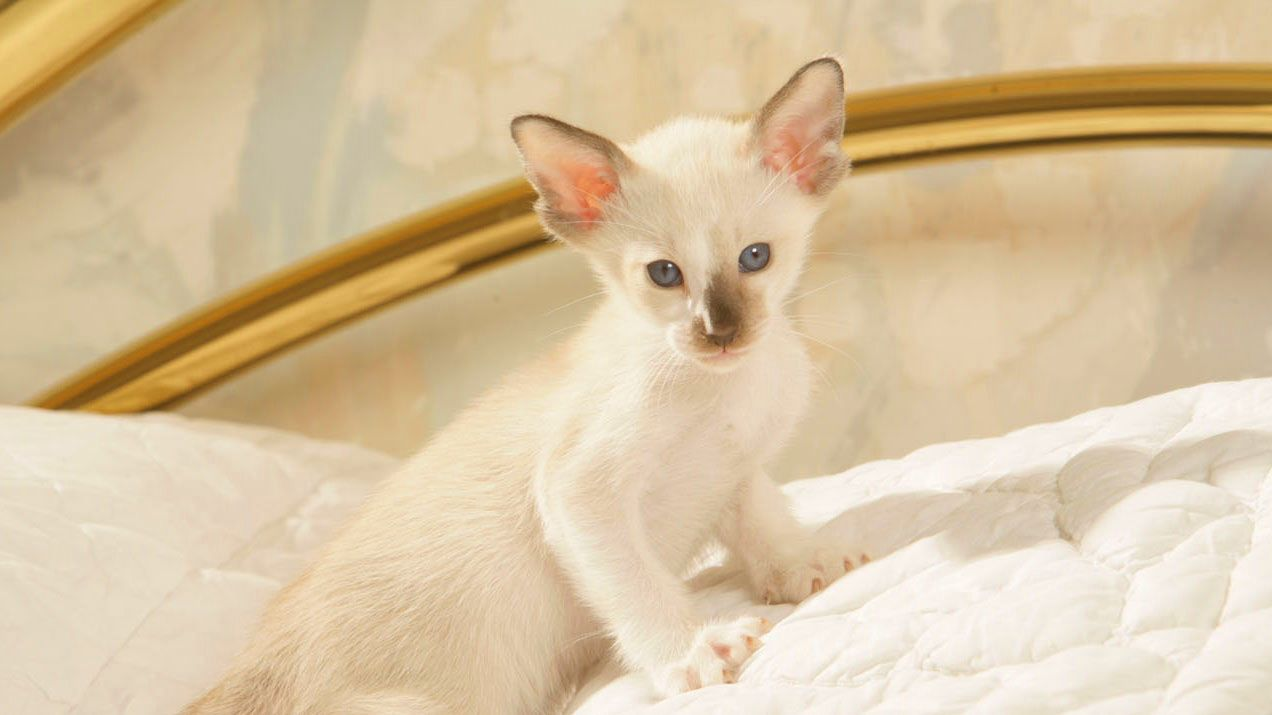
Caring for your Siamese
Grooming, training and exercise tips
Quite an energetic cat, the Siamese is also a fairly determined climber. As such, they will benefit from having a good-quality, sturdy cat tree to help keep them occupied. That way you will hopefully be able to avoid them climbing up your curtains. Among the other characteristics of a Siamese cat, they also thrive on playing games. So that can be another handy way to keep them active—both physically and mentally. A range of cat toys will help keep them busy, and they even enjoy a game of fetch. Another way to ensure they get enough exercise is to adopt the aforementioned solution of having a second Siamese (that really can’t be said enough) as they will also enjoy chasing each other.
One of the other great things about the Siamese breed is that they are very low-maintenance in terms of grooming. All they really need is a quick run-through with a comb once a week to remove any dead hair. The Siamese cat also sheds very little compared to some other breeds. As they are also clean animals, too, they rarely need to be bathed either – though it’s recommended that they have a professional grooming session twice a year. Also, remember to give their ears a check for any signs of infection and to brush their teeth daily, if you can manage, or at least two or three times a week.
A highly intelligent breed of cat, the Siamese learns super-fast and will quickly settle into life in your home. However, as they thrive on interaction and form strong bonds with their owners, they do require a certain amount of time investment. In short, this is a breed best-suited to someone looking for a companion animal—especially as one of the Siamese behavior traits is that they enjoy playing games. As they can also suffer from separation anxiety, it’s recommended that you get a pair if you’re likely to be out a lot. That way, they can keep each other company—and hopefully out of any mischief. But, on the whole, Siamese behavior problems are minimal.
Quite an energetic cat, the Siamese is also a fairly determined climber. As such, they will benefit from having a good-quality, sturdy cat tree to help keep them occupied. That way you will hopefully be able to avoid them climbing up your curtains. Among the other characteristics of a Siamese cat, they also thrive on playing games. So that can be another handy way to keep them active—both physically and mentally. A range of cat toys will help keep them busy, and they even enjoy a game of fetch. Another way to ensure they get enough exercise is to adopt the aforementioned solution of having a second Siamese (that really can’t be said enough) as they will also enjoy chasing each other.
One of the other great things about the Siamese breed is that they are very low-maintenance in terms of grooming. All they really need is a quick run-through with a comb once a week to remove any dead hair. The Siamese cat also sheds very little compared to some other breeds. As they are also clean animals, too, they rarely need to be bathed either – though it’s recommended that they have a professional grooming session twice a year. Also, remember to give their ears a check for any signs of infection and to brush their teeth daily, if you can manage, or at least two or three times a week.
A highly intelligent breed of cat, the Siamese learns super-fast and will quickly settle into life in your home. However, as they thrive on interaction and form strong bonds with their owners, they do require a certain amount of time investment. In short, this is a breed best-suited to someone looking for a companion animal—especially as one of the Siamese behavior traits is that they enjoy playing games. As they can also suffer from separation anxiety, it’s recommended that you get a pair if you’re likely to be out a lot. That way, they can keep each other company—and hopefully out of any mischief. But, on the whole, Siamese behavior problems are minimal.
7/7
All about Siamese
Yes, absolutely – that is one of the main Siamese behavior traits. In fact, they make excellent companions all-round. However, due to their activity level and intelligence, the Siamese can occasionally get into mischief if left alone. So, they will do best with an owner who wants to spend time with their cat.
One of the longer-lived breeds, Siamese cats live up to around 12 to 15 years on average⁴. However, some can reach 20 years old – and even beyond. So, in short, the life expectancy of a Siamese cat is fairly high.
Other breeds that might interest you
Read more on this topic
Sources
- Veterinary Centers of America https://vcahospitals.com/
- Pet Plan Siamese
- Banfield Pet Hospital https://www.banfield.com/pet-healthcare/additional-resources/breed-information
- Cat Time Siamese Cats
Like & share this page